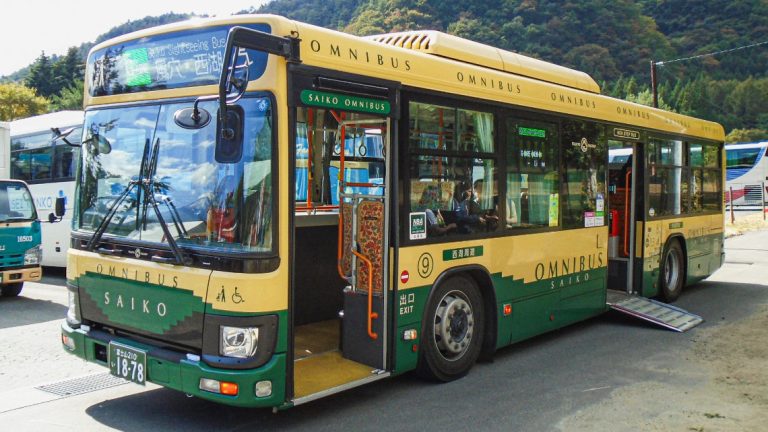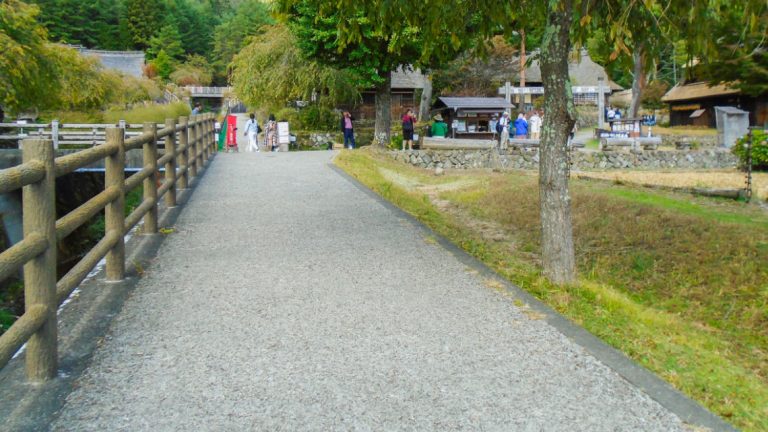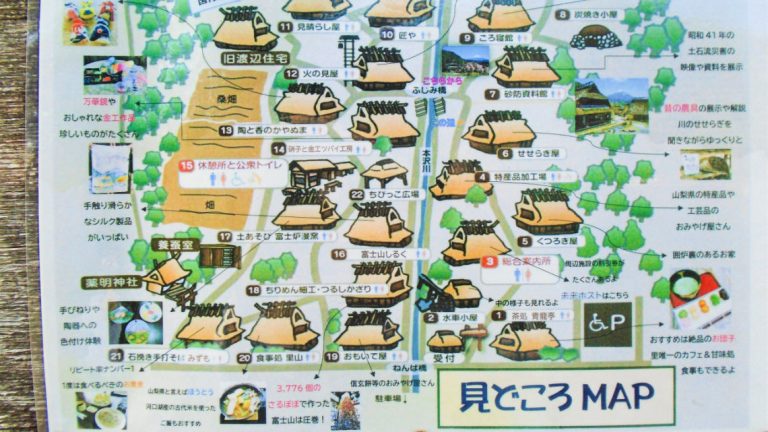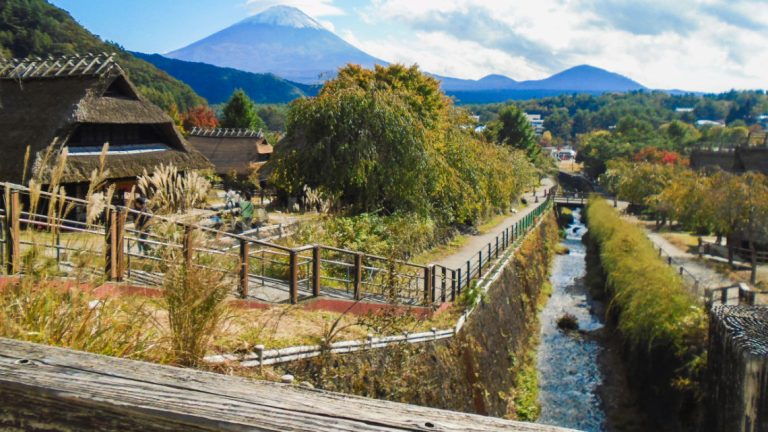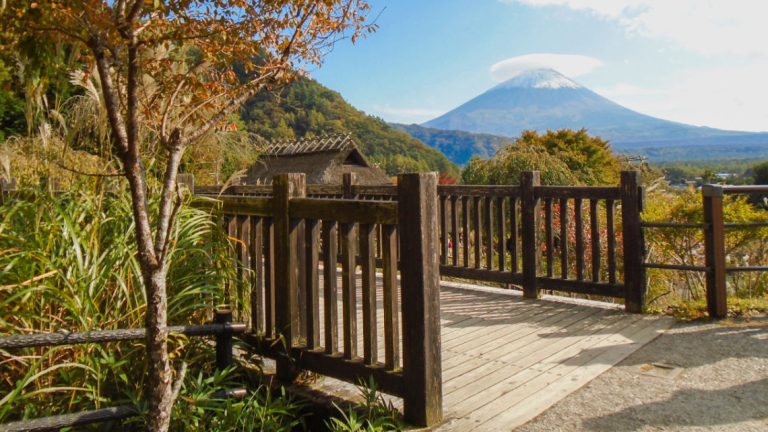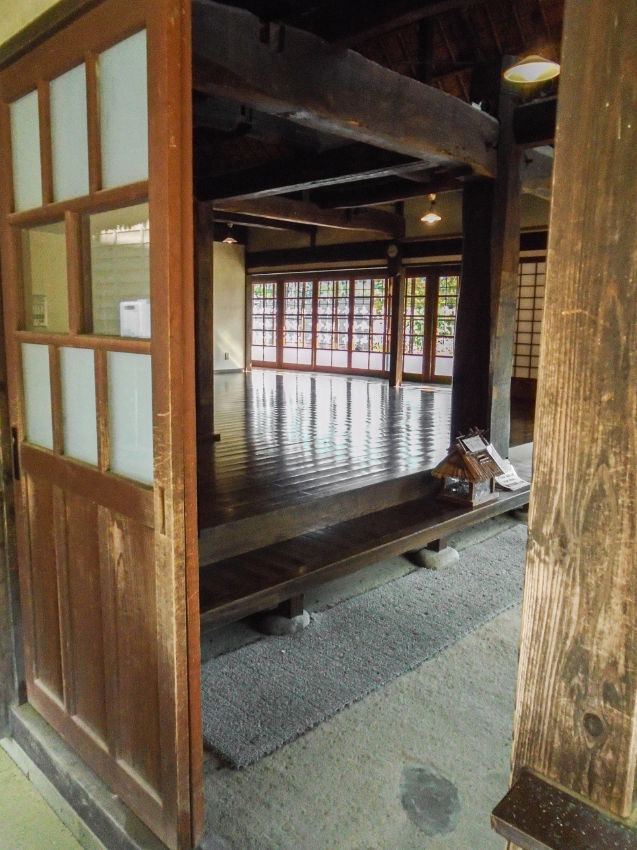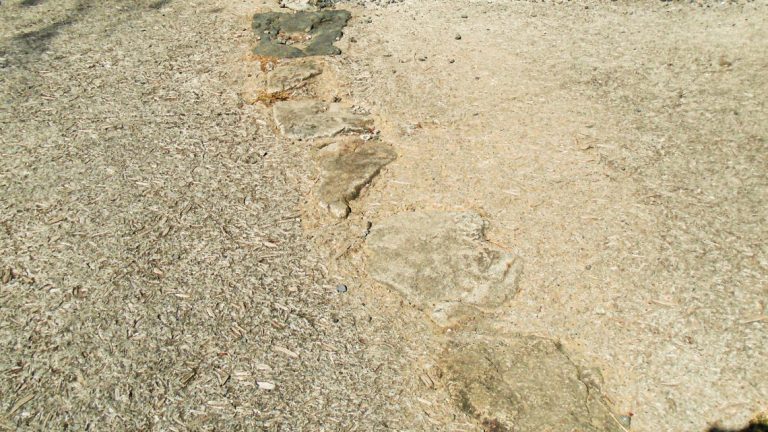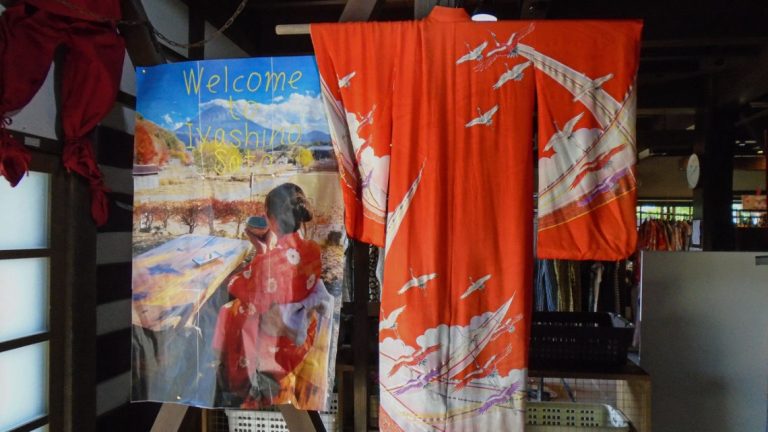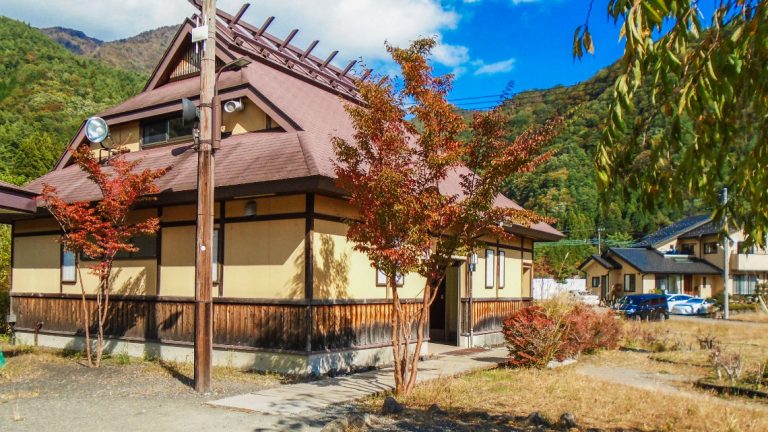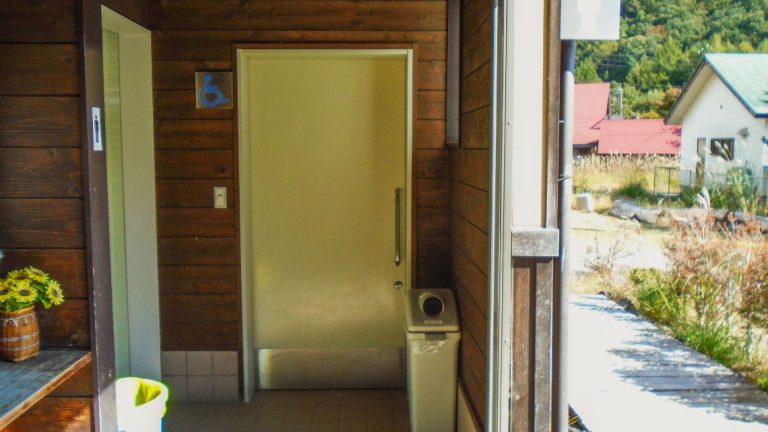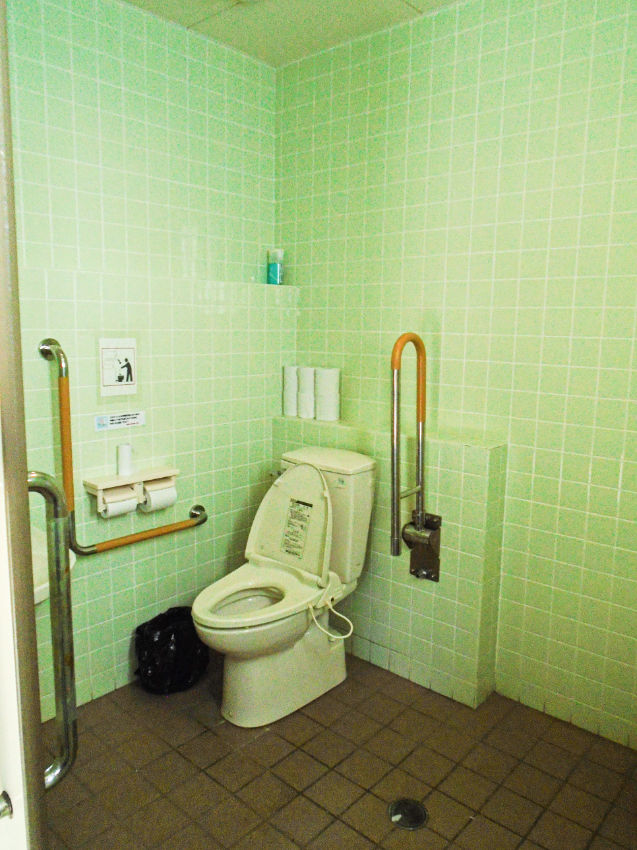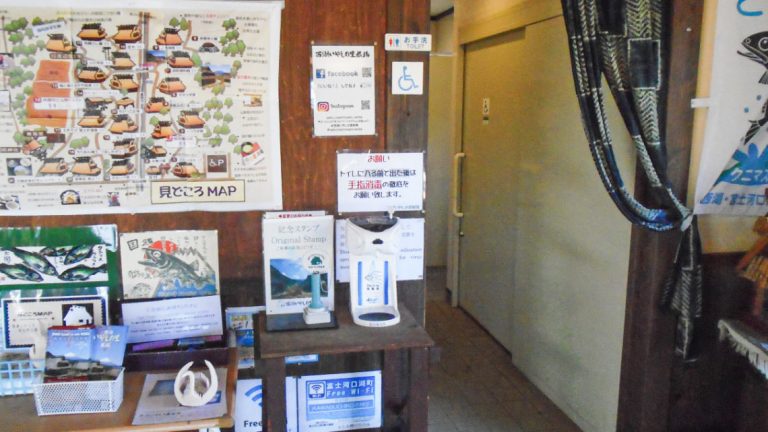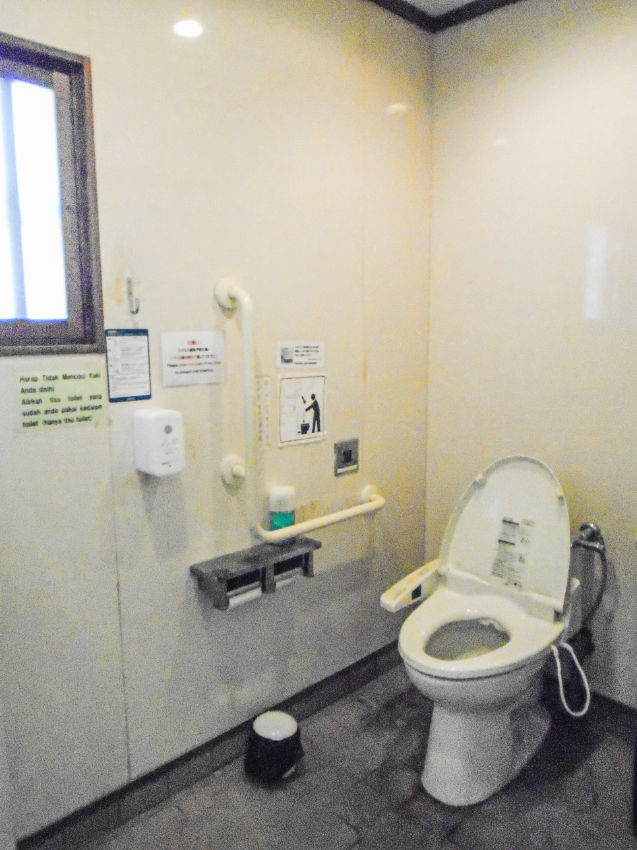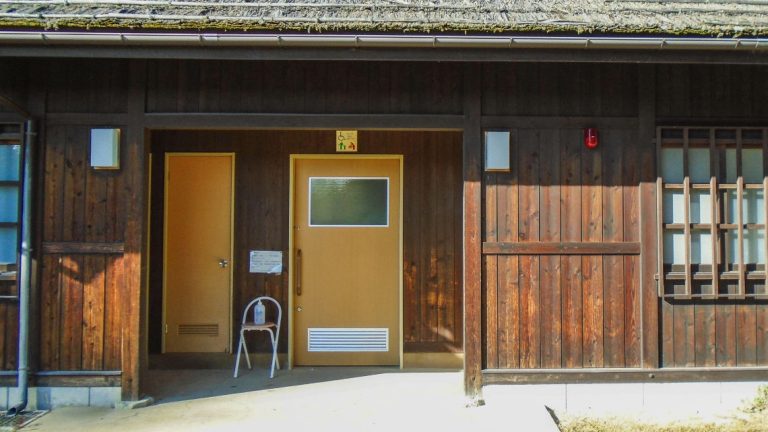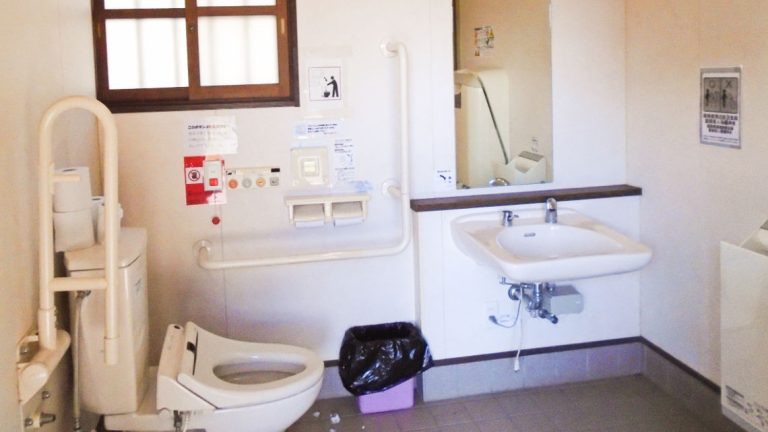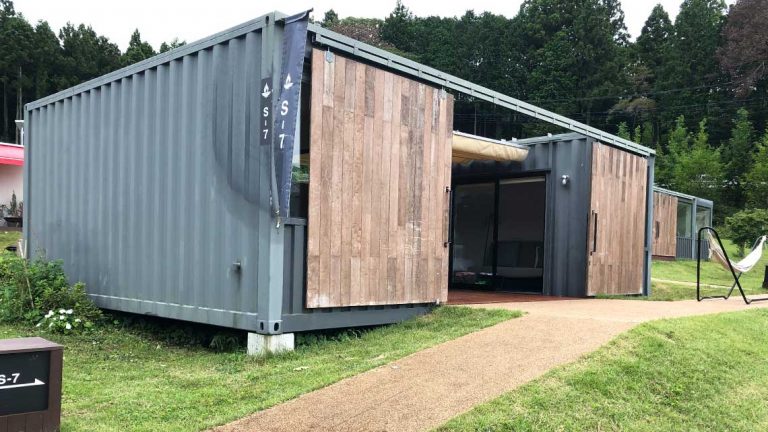Many places in Japan are an amalgamation of historic and modern design sitting side-by-side. While this isn’t necessarily bad, sometimes the modern can eclipse the traditional. Saiko Iyashi-no-Sato Nenba seeks to remind those of the beauty found within tradition, away from most modern distractions, and surrounded by the forest, mountains, and water. This unique, traditional village sits welcomingly, waiting for you to visit.
General Information
Located on the northwest side of Lake Saiko (one of the Fuji Five Lakes), sat a beautiful traditional Japanese village with an awe-inspiring view of Mt. Fuji and blessed with mild yearlong weather. Known in the past as Nenba, the village was a well-known location in Japan with its traditional houses and lifestyle – it was even reverently referred to as “the most beautiful village in Japan.” Sadly, this would only last until 1966, when a series of typhoons caused flooding and landslides that destroyed over 90% of the village overnight.
While the village of Nenba was lost for some time, it wouldn’t be forgotten. In 2006, four decades after the disasters, the village would be reborn with the creation of twenty thatched-roof houses made with traditional local techniques, use of old lumber, and designed to highlight nature’s beauty as Nenba once did. This new village would be called Saiko Iyashi-no-Sato Nenba, and it now serves as an open-air museum and “tourism exchange center that highlights the local history, culture, and natural environment unique to this area.”
Nestled in a forest covered mountainous valley, Saiko Iyashi-no-Sato Nenba was reconstructed around a central canal fed by waters originating from higher up the mountain. The main paved paths follow along each side of the canal (a few bridges between) with stairs going up toward the back of the village, the paths branch off occasionally and allow access to the rest of the buildings. However, the stairs aren’t required to reach any of the buildings, bridges, or viewing areas thanks to paved sloped pathways that wind through Saiko Iyashi-no-Sato Nenba.
The beautiful traditional-style thatched-roof buildings spread throughout the village are not just for show, each has a purpose and something to explore within. Here are some highlights of some of the buildings found here:
- General Information Center: Local information, activities, postcards, and more.
- Dressing/costume service: For a rental fee, you can choose from over 100 different types of kimonos, armor, helmets, swords, ninja costumes and more (reservation in advance may be required).
- Resting areas: Depending on the weather heating/air conditioning may help you avoid harsh temperatures here, although on beautiful days you can enjoy a breeze with the windows and doors opened wide in true Japanese style.
- Sabo (Erosion Control) Museum: Learn about the 1966 disaster, development of prevention measures, etc.
- Souvenirs and Workshops (in multiple locations): Ceramics, Incense craft, Glasswork, Metalwork, Silk accessories, and more can be bought or customized by you (reservation may be required for workshops).
- Dining options: For a light traditional snack you can find some at Seiryutei Tea House; a hot bowl of Udon or Hoto can be found at Restaurant Satoyama; or try Soba and Tempura at Handmade Soba Mizumo.
- Restroom facilities: There are two accessible toilet facilities, one in the General Info. Center (though the hallway to it is tight), and one in a standalone building on the opposite side of the canal (additionally, before entering the village there’s an accessible toilet in a standalone building).
Many places in Saiko Iyashi-no-Sato Nenba are perfect for beautiful photo opportunities (with or without a costume), and with clear skies gorgeous views of Mt. Fuji can be seen from many of the buildings (you can even eat soba while gazing through the window at Mt. Fuji). The village can be mostly explored in about 3-hours without participating in a workshop, dressing-up, and only having a quick meal. However, if you want the full experience (with workshops and dressing up) then you may want to plan on staying at a hotel nearby and arrive early to stay for a full day of exploration. Either way, Saiko Iyashi-no-Sato Nenba is a great place to create new and enjoyable experiences.
Admission Cost for Saiko Iyashi-no-Sato Nenba is by age/grade:
- Adult/High School students: ¥500
- Junior high and Elementary school students: ¥250
- Admission for persons with a Japanese disability certificate: ¥150 for adults, ¥50 for children
Hours of operation are, March-November from 9:00 until 17:00, December-February from 9:30 until 16:30. Open every day.
Restaurants require the above admission fees to dine, hours of operations follow the same as above, however, they may be closed on some holidays. Workshop activities require admission and reservations prior to your visit, hours of operations follow the same as above, however, they may be closed on some holidays. The dressing service (costumes) requires admission and advance reservation, the cost is ¥2,000-yen per person.
Getting There
Saiko Iyashi-no-Sato Nenba is in the village of Saiko Nenba, Yamanashi Prefecture. Getting to this location without transferring out of a wheelchair requires some planning ahead (see below), but it’s not too difficult. The closest train station is Kawaguchiko Station (which acts as a bus station as well), it is then a 45-minute bus ride to Saiko Iyashi-no-Sato Nenba, or 25-minute drive by car. If you do happen to drive to this location, free parking is available.
Planning Ahead: First a bit of caution, there are some sightseeing buses that go to Kawaguchiko Station from the Tokyo area, but there’s a good chance they won’t have a wheelchair lift like local buses do, so don’t count on using them if you want to stay in your wheelchair.
Getting to Kawaguchiko Station from the Tokyo area (starting as far away as Shinjuku) by train will use the Chūō Line and most likely the limited express Fuji Excursion service, there are seats on this train for wheelchair users, but it isn’t as simple as buying them online or at the station when you’re ready to leave as both options may show the seats as booked. The best option here is to go a week in advance (more if possible) to a JR Ticket center (look for the green chair icon) in a major JR station and inquire about the date(s) and times of your trip to and from Kawaguchiko Station. Chances are the accessible seats will show as unavailable online, but it may be just blocked so they can be booked by a ticket agent for a wheelchair user. Note, it will take quite a bit of time (sometimes an hour) for the agents to confirm the tickets for this trip at the ticket office so expect to wait.
When determining when to leave on the train, make sure to add some extra time between any trains/buses before and after scheduled rides. This is especially important if you intend to go to the village as a day trip, as you will have a limited bus schedule to work with on the last part getting to the village (it is possible to have 3-4 hours in the village in this case). The buses from Kawaguchiko (Saiko Omnibus, Green Line) leave 10-minutes past the hour each hour for most of the day to the village and take 45-minutes, then they return on a similar schedule.
Accessibility
Most of this area is accessible by wheelchair, this includes the local buses you most likely will ride to get to the village. There are ramps into almost all the buildings, and while the entry doors can be a tight fit, on our visit a larger motorized wheelchair fit through them.
A few of the buildings have second floors with some items on display that are only accessible by stairs. A few spots of the paved pathways need repair or are uneven cobblestone making it difficult to traverse but mostly they can be avoided. Nevertheless, wheelchair users should be cautious while exploring the pathways. Damaged areas aren’t the biggest issue here as only a couple parts are in disrepair, but due to the mountainous nature of the area the pathways can be very uneven and the hillside beside some of them can drop steeply. It won’t be too much of an issue for a motorized wheelchair to handle (just watch the angles and take it slow), but if you’re in a manual wheelchair you may need to bring a strong helper with you.
There are not many outdoor seating areas here for those who need to rest between walking. However, there are two resting area buildings on the east side of the canal, as well as seating in the restaurants on the west sides of the canal that could be utilized. Luckily, the village isn’t too spread out, so you don’t have to go far to reach the next building.
A discount ticket pricing is available for those with a Japanese disability certificate.
Caution with weather. Other than ruining the view of Mt. Fuji, rainy, wet, or snowy weather could make parts of the village slick and inaccessible or even dangerous to try to navigate in a wheelchair. It is advised to go on a clear day if you have the option.
There are two wheelchair accessible toilets available, one in the General Info. Center (#3 on local map, though the hallway to it is tight), and one in a standalone restroom building (#15 on local map) on the opposite side of the canal (additionally, before entering the village there’s an accessible toilet in a standalone restroom building). All have typical assistive fixtures including: accessible sink, multiple grab bars, and bidet.



